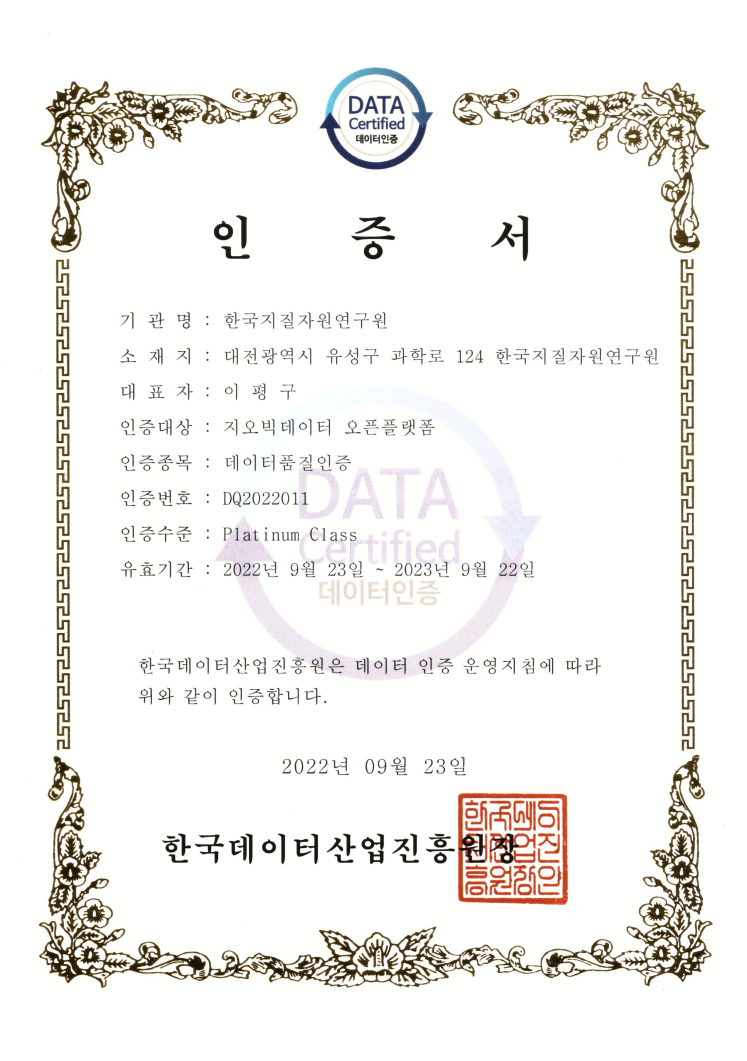데이터 품질 인증서

| 자료유형 | KIGAM 보고서 |
|---|---|
| 제목 | 활성단층 조사평가 연구 : 한반도 동남부 지역 |
| 저자 | 최위찬 |
| 언어 | KOR |
| 청구기호 | KR-98-C-22-1998-R |
| 발행사항 | 韓國資源硏究所, 1998 |
| 초록 | The evaluation for active fault of the Korean Peninsula has been released to let KIGAM research one of projects of MOTIE (The Ministry of Trade, Industry, and Energy) form 1997. This is the final report of the second year project. The aim of this project is to find out active fault in Korea, and to figure out quantitative characteristics of active fault. Results of this project is precisely applicable to the field of nuclear power plant and to re-evaluation of lifeline safety and so on. To mitigate the seismic hazard, detailed survey of active fault is needed. But no much capable faults are revealed in Korea. However, during recent 3 years, tens of capable faults are identified through this study and other works. Especially, the finding of the Eupchon and Suryum faults near the Wolsung Nuclear Power Plant would be given a good information to evaluate and to treat the safety problems in advance. From now on, we can use our proper accumulated knowledge to find out a suitable site for new nuclear facilities as well as the operating one. Here we summarize the results of this year project as follows. 1) Quaternary faults discovered in the Yangsan Fault System including the coastal fringe between Pohang and Ulsan are 12 in total. They develop on 5 places of the Yangsan Fault Zone, that is the Sinhwa, Sangcheon, Yeonbong faults and Wolpyeong Fault I and II, and on 5 places in the Ulsan Fault Zone including the Ihwa, Wonwonsa, Ipshil, Malbang and Galgok faults. The Eupchon and Suryum faults along the coastal terrace region, Yangnam-myon, Kyongju are found through this project. 2) Quaternary faults in the southeastern Korea show the common characteristics of the top-to-the-west movements as a product of E-W compressional stress. 3) The fault movements might be occurred in the Upper Middle or Late Pleistocene.4) These faults are the results of the E-W compression forced in the southeastern part of the Korean Peninsula since 15 Ma. 5) Result of ESR age dating for the Sangcheon Fault shows that the fault is reactivated at least four times from about 800,000 to 400,000 yrs. B.P.6) Malbang Fault is turned out to be a capable fault moved two times within 500,000 yrs. Lastly, we would strongly recommend that additional works be performed to develop a more detailed Quaternary stratigraphy in southeastern Korea. Further differentiation and dating of continental and marine deposits will provide a more usable stratigraphic context for assessing late Quaternary crustal deformations |
| 페이지 | xx, 301 p. |
| 키워드 | 활성단층, 단층, 제3기층, 제4기지질, 지구조 |
| 원문 |
http://library.kigam.re.kr/report/1998/활성단층조사평가연구한반도동남부지역.pdf |
댓글